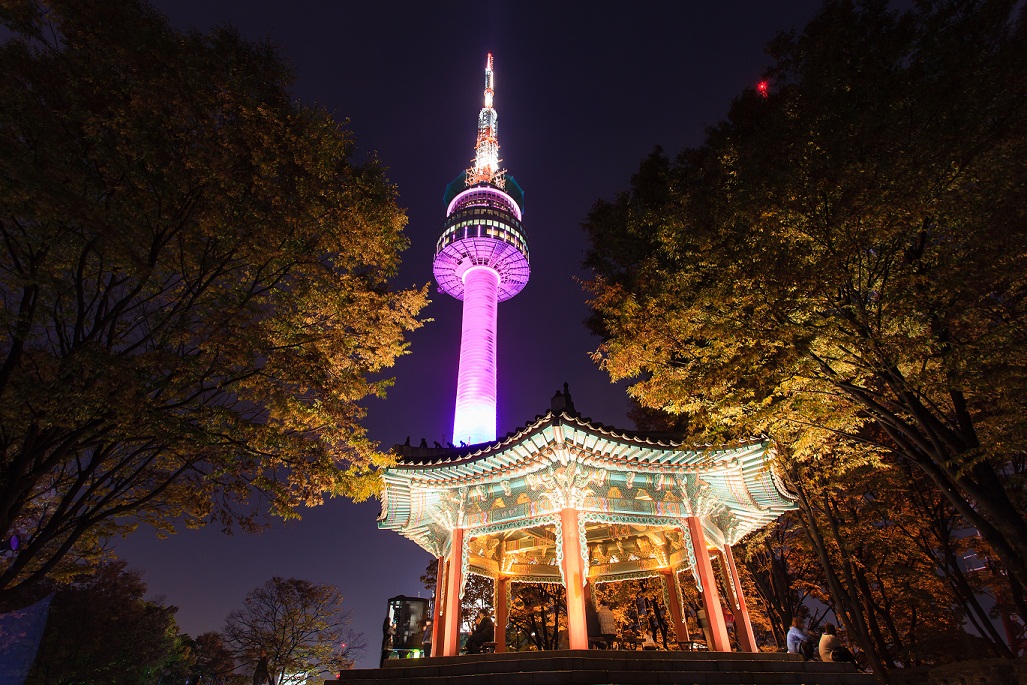In this post, I’m going to talk about a mountain my dad and I often go to in the summer. It’s right in the middle of Seoul and is a place of significance to many residents, especially aged residents, of Seoul. Namsan, “the Northern Mountain”, is a very important mountain in history and in contemporary Korean society. Also with its easy trekking route and multiple outdoor congregating areas, thousands of Koreans visit to exercise and socialize with other people. My family often went there on the weekends due to its proximity and to exercise. Anyway, enough with our personal stories, why is this place so important to Koreans today and what historical significance does this mountain hold? To answer that, we have to take a deeper look into East Asian culture, especially superstition and decisions past kings made.
I like history; I’ll often connect what I’m writing to its historical context. Also because Seoul is rich in history and has been the nation’s capital for the past 600 to 700 years, not writing history would leave out important details about a place. Now, back to our mountain here, Namsan and the mountains surrounding Seoul wasn’t mentioned in early Korean history. In fact, the area of Seoul isn’t prominently featured in Korean history until the late 14th century when a dynastic change occurred in 1397. Our country’s history, like China’s, can be divided into dynasties. The name “Korea” is from a dynasty that flourished during the Middle Ages in Europe. However, our dynasty in question is the one following that, the last dynasty in Korea (the Chosun Dynasty). In order to open a new dynasty, you, most importantly, need a new capital city to get rid of any memory of the previous dynasty. Since ancient times, Koreans, alongside many east Asian cultures, were heavily superstitious, beyond a religious sense. One part of this superstition was a chi and shaman like idea regarding to geography, like mountains, lakes, oceans, and rivers. While searching for a site to build the new city, a monk, commissioned for the project, stumbled upon a mountain that held all the right spiritual balance and was full of potential. He recommended this site to the newly risen king and Seoul (or Hanyang as it was known until 1945) became and still is the capital city of Korea. So Namsan mountain played a huge role in the settling of Seoul and its eventual boom. Now Seoul is the 2nd populous city in the world. Namsan mountain, I think, symbolizes Seoul pretty well.
When speaking about Namsan mountain, you can’t forget the tower atop of it, which is the modern symbol of Seoul. The tower, or the N Tower, symbolizes Seoul currently and is on every post cards, travel guides, and merchandise in Seoul. Now, it’s a pretty modern building and was built to be used for telecommunication purposes. However, as communication advanced rapidly, the need for the tower decreased. Currently, it’s a very popular tourist attraction with all the facilities in place. Also, as an added bonus, at night, night lights come one and provides a great view.
As for our family, we love this mountain because for the past 3 years it provided a place to get away from the busy city life. By trekking the route every weekend, my father became much healthier and lost a lot of weight. Also, whenever I go back home during the summer, I often go to the mountain to battle jet lag after a 17 hour flight (this really helps). All in all, the mountain means a lot to our family and because of its significance to the history of Seoul, it’s near and dear to many peoples’ hearts in Seoul.



Wow this is so cool! I’m a huge fan of traveling so I love your posts about Seoul because I’m learning how unique of a city it is. This particular aspect of the city is so beautiful (I love the pic your dad took!!) and makes me want to come and explore the city. I really like the historical value and symbolism that you described and how the mountain brings this aspect to the city. It definitely seems like a serene place to clear your head and I would probably visit as well to get away, exercise, or relax based on how you described it!
This was such an interesting blog! I love travelling, and I also love the outdoors, so it was really cool to read about a mountain that has such significance both to you and the city. The history portion of the post was really interesting, and it gave great context as to why the mountain has such significance for the people of Seoul. In my childhood I lived in New York City and then the suburbs of New Jersey, so I understand completely the desire to go to places like, in my case, Central Park, when living in a populated city life. I can’t wait to read more of your blogs!
This was such an interesting blog post, opening my eyes to new information that I never before knew about. I really appreciated the historical context which you incorporated into explaining about the mountain’s importance to Korea. Never had a realized that these different superstitions played such an important role in the Korean culture. I think often we tend to look at many of these destinations from a single-sided viewpoint, forgetting that many of these places consists of so much culture and history.